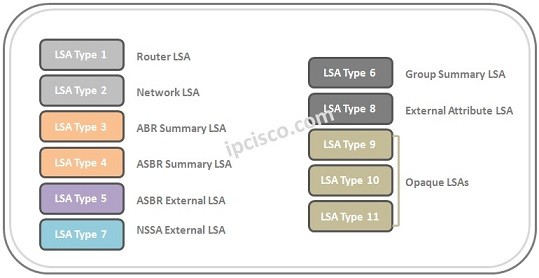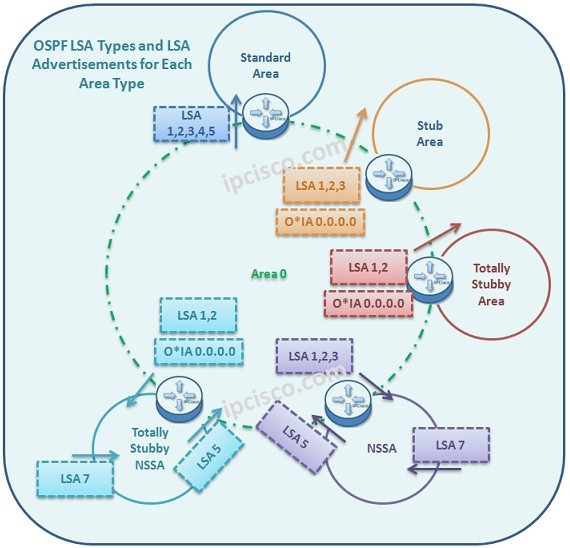- COURSES
- SPECIALS
- BLOG
- MEMBERS
- SHOP
- ABOUT
- ENROLL HERE

In OSPF, Link-State information, in other words, Routing information is exchanged between routers. This exchange is done with LSAs (Link State Advertisements). There are eleven different OSPF LSA types and each of them has a special purpose. Some of the OSPF LSA types are the main LSA types that are used in OSPF operations often. Let’s see all the LSA types:
Now, let’s talk about these OSPF LSA types detailly. Here, it is better to explain these LSA types with different area types and their LSA Adversisement requirements. So, the below diagram will be very useful for you.
You can also view OSPF Packet Types
Table of Contents
Router LSA (Type 1) is the LSA type used in standard areas. The aim of this LSA type is giving information about the router. This LSA includes information like Router ID, Router interfaces, neighbors, ip addresses and cost. Router LSA can not pass ABR, so it can not reach to the other areas.
You can also reach other Cisco CCNP ENCOR lessons
Network LSA (Type 2) is the other LSA type used in standard areas. This LSA is sent by DR. The main aim of this LSA type is listing the connected routers in the segment and informing the other routers. This LSA includes information like DR, BDR IP addresses, subnet masks. Network LSA can not pass ABR, so it can not reach to the other areas.
ABR Summary LSA (Type 3) is generated by ABR (Area Border Router) to advertise one Area’s networks to other Areas. ABR Summary LSA (Type 3) includes all prefixes available in the Area.
ASBR Summary LSA (Type 4) is generated by ABR (Area Border Router) to inform its areas about how to reach the ASBR (Autonomous System Border Router). ASBR Summary LSA (Type 4) includes ASBR’s Router ID.
You can also learn Cisco OSPF Configuration


Leave a Reply